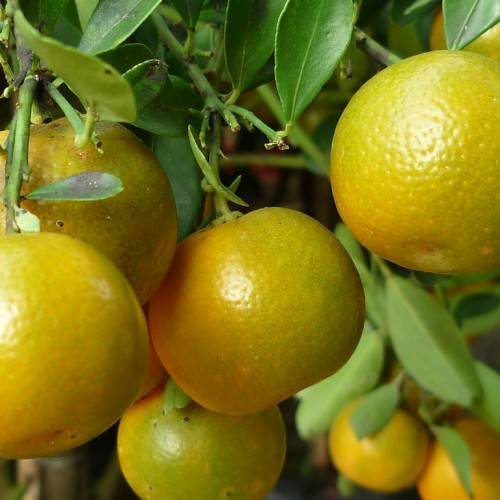
mandarin orange
Citrus reticulata 'Clementine'
Cycle:
Perennial
Watering:
Average
Hardiness Zone:
9 - 11
Flowers:
Flowers
Sun:
Full sun
Fruits:
Fruits Ready In Winter
Edible:
Yes
Leaf:
Yes
Growth Rate:
High
Maintenance:
Low
Drought Tolerant:
Yes
Salt Tolerant:
Yes
Tropical:
Yes
Care Level:
Medium
watering
Generally, mandarin orange trees need about one inch of water per week, ideally spread out over several waterings. This can be measured with a rain gauge or by a general estimation of the time needed to water the tree. In the summer, mandarin orange trees typically require more frequent and deeper watering, as the weather tends to be hotter and drier. For healthy tree growth and production, watering should be done every two weeks, when the soil becomes dry to the touch.
pruning
Mandarin orange plants should be pruned annually in late winter. To maintain a desired shape and height, pruning should be done lightly and selectively, removing no more than 1-third of the growth each year. If the plant has become overgrown, it’s best to prune it back gradually over a few years, removing no more than 1-third of the growth each year. Additionally, removal of dead, diseased and rubbing branches should be done during the winter months.
sunlight
Mandarin oranges need plenty of sunlight to grow and produce fruit. They should be planted in an area that receives full sun (at least 8 hours of direct sunlight each day). If planted in partial shade, the fruit may not mature properly. Plants should also be kept in an area with good air circulation to avoid fungal diseases.
Season
Hardiness Map
Similar Plants
I accidentally put it in too large of a pot when it outgrew it’s last pot. It SLOWLY put out a new leaves but the middle leaves died. I went to repot with aroid media and chopped it from the middle to make it less barren
